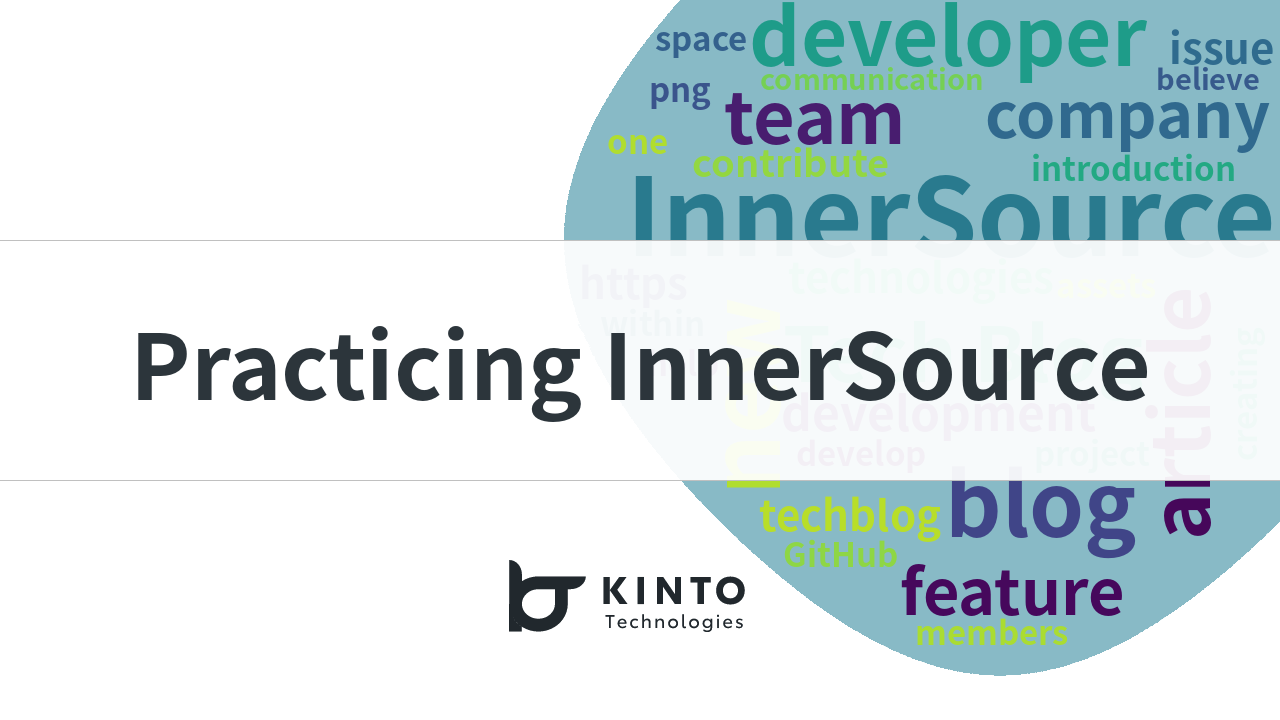テックブログにおけるアウトプットを推進するための取り組み

はじめに
KINTOテクノロジーズで、モビリティマーケットの開発・運用兼テックブログの運用を担当しているリナ(@chimrindayo)です。普段はフロントエンジニアとして、主にNext.jsを用いて実装しています。
最近は、おでんが美味しい季節がやってきてワクワクしています🍢
今年はトマトおでんが食べたいな・・・🤤
さて、KINTOテクノロジーズでは、社外のイベントへの登壇やテックブログの執筆など「習得した知識・スキルのアウトプット」を全社でサポートしています。
今回はテックブログの記事がリリースされるまでにどんなことをやっているか、公開されるまでの過程と各工程でアウトプットを推進するための取り組みをご紹介します!
テックブログ運用プロジェクト
まずはじめに、KINTOテクノロジーズの「テックブログ運用プロジェクト」というチームが存在します。
テックブログ運用プロジェクトではテックブログの運用を始めとして、社員の知識のインプット・アウトプットを推進することを目的としています。
所属するメンバーは8名で、全員が兼任者です。
他プロジェクトでPdMやエンジニアとして活動する傍ら、楽しくアウトプットできる方法を日々模索しています!
これからご紹介する取り組みは、テックブログ運用プロジェクトに所属するメンバーがアウトプットを推進するために実施している取り組みの一部です!
テックブログの公開フロー
テックブログの公開フローは、大きく3つのフェーズに分かれています。

1. 執筆
1つ目は、記事を執筆するフェーズです。記事のネタ探しおよび執筆テーマの決定、プロットの作成から記事に落とし込んで執筆するまでが執筆フェーズに該当します。
2. レビュー
2つ目は、執筆された記事のレビューフェーズです。KINTOテクノロジーズでは3段階のレビューを行い、誤字脱字チェックや記事の内容を担保しています。
3. リリース
3つ目は、記事をリリースするフェーズです。リリースフェーズでは、記事の翻訳やGitHubを利用したリリース作業を実施しています。
では、各フェーズでどんなサポートをしているのか、実際に取り組んでいる内容をご紹介します!
テックブログの記事が公開されるまで
まずはじめに、執筆フェーズでのテックブログ運営チームの取り組みをご紹介します。

相談窓口
アドベントカレンダーの執筆期間は、毎日1時間テックブログチームのメンバーがSlackチャンネルのハドルミーティングで待機し、執筆者が気軽に相談できる体制を作りました。
執筆する上での悩み・マークダウンの書き方など、ちょっとした悩みを解消できる場として、多い時は1日に5~6人ほどが利用しています。
実際に「他の人にも相談窓口勧めておきましたー!」などの声があり、思ったより好評だったと思います✨
執筆者インタビュー
「ネタが思い浮かばないけど、記事を書いてみたい!」「ネタはあるけど、記事にうまくまとめられるか不安」と考えている執筆者向けに、テックブログの運営メンバーがインタビューする時間を設けています。
インタビューは30分ほど行い、入社してから現在までどんな業務に取り組んできたのか、また各業務における課題や問題の解決方法などを中心にヒアリングしています。
そして、ヒアリング結果をもとに記事のプロット作成までをインタビューの時間内で行います。
インタビューを通して「記事書くの不安だな・・・」と思っている人に「思ったより書けそう!」と記事を書くことに対するハードルを下げること、そして日々取り組んでいる業務にいかに価値があるか再認識してもらうことで、執筆者の魅力を最大限に引き出すことを目的としています。
また、記事の内容は業務で携わった内容に絞っています。
そして、技術に携わる人全員がアウトプットできるよう、いわゆる「技術」だけでなく、最大限に技術を活かすためのマネジメントやオフィスの環境など、技術を支えるスキルをアウトプットすることも推進しています。
レビュー

記事を執筆した後は、異なる観点で3段階のレビューを行います。
3段階のレビューを通して記事のクオリティを担保し、読み手にわかりやすい記事を作成することを目的としています。またレビューをする上で「執筆者へ感謝すること」を大切にしています。
コンテンツレビュー
まずはじめに、記事の内容の正誤をチェックするためのコンテンツレビューを実施しています。
主に以下の観点で執筆者のチームメンバーやマネージャーがレビューします。
多くの記事は2~3名以上のレビュアーがつき、より読みやすい表現の提案や記事のGood Pointなどもフィードバックをしています!
レビュー観点
・ 専門家として内容の正誤を確認
・ 秘匿情報の有無を確認
テックブログチームレビュー
次にテックブログ運用チームによるレビューです。
テックブログチームでは、以下の観点でレビューを行っています。
執筆者の文調を大切にしつつ、読みやすい文章・記事構成の提案、誤字脱字や「てにおは」をチェックします。
また読み手の立場として「この情報も知りたい!」と内容の追加を提案する場合もあります。
レビュー観点
・ 誤字脱字
・ 著作権
私自身テックブログチームとしてレビューすることがほとんどなのですが、レビューを通じて「JIRAでGitHubのデプロイ履歴が追えるのか・・・!」「このレビューガイドラインは自分のプロジェクトにも導入したい」など、新たな学びや発見があっておもしろいです💡
CIOレビュー
さいごにCIO 景山さんによるレビューです。
すべての記事を景山さんがレビューしており、景山さんの承認をもって記事のリリース準備が完了します🎉
私自身このレビュー工程があるおかげで、執筆者が自信をもって記事をリリースできるようになっていると考えています。
リリース
すべてのレビューが終了した後は、リリースに向けて最終調整をします。
今回は特に力を入れている「記事の翻訳」についてご紹介します!

記事の翻訳
KINTOテクノロジーズに在籍する社員のうち約25%が外国籍の社員です(2023年11月時点)
したがって「母国語で執筆したい」「日本語で書くのが不安」と考えているメンバーもいます。
そういったメンバーのニーズに応えるためにすべての記事を日⇔英翻訳し、執筆者が日本語 or 英語どちらの言語で執筆するか選択できるようにしています🔤
翻訳のベースはLSP (Language Service Provider)、外部協力会社を使用し、最終的にLQAの作業を内部で実施しています。
LQAとは『Linguistic Quality Assurance』の略で「言語品質保証」のことを指しています。
外部リソースだけで構成された文章では、どうしても不適切な言い回しになってしまったり、執筆者の意図とは異なる文章になってしまうことがあります。
こうした不自然な表現やスペルミスをLQAの段階でチェックしています。
(参考:外国籍社員の活躍)
さいごに
今回は、テックブログが公開されるまでに実施しているアウトプット推進の取り組みをご紹介しました。引き続き、KINTOテクノロジーズのメンバーがアウトプットがしやすい環境を作るために試行錯誤しながら改善してきたいと思います!
また、弊社のテックブログによるアウトプットがみなさまのお役に立てれば幸いです。
テックブログの運用や技術広報について、みなさまと意見交換ができれば嬉しいです!
ご意見は X までご連絡ください🕊
関連記事 | Related Posts

How We Reached 100 Articles on the KINTO Technologies Advent Calendar

Practicing InnerSource in KINTO Tech Blog (Celebrating our 1st anniversary🎉)

テックブログにおけるアウトプットを推進するための取り組み

Advent Calendar 2023 Announcement

Mind-Blown! Tech Blog Is About Writing What Happens

Introducing the Owned Media & Incubation Development Group
We are hiring!
【PjM】KINTO開発推進G/東京
KINTO開発部 KINTO開発推進グループについて◉KINTO開発部 :58名 - KINTOバックエンドG:17名 - KINTO開発推進G:8名★ ←こちらの配属になります - KINTOフロントエンドG:19名 - KINTOプロダクトマネジメントG:5名 - KI...
【フロントエンドエンジニア(リードクラス)】KINTO中古車開発G/東京
KINTO開発部KINTO中古車開発グループについて◉KINTO開発部 :58名 - KINTOバックエンドG:17名 - KINTO開発推進G:8名 - KINTOフロントエンドG:19名 - KINTOプロダクトマネジメントG:5名 - KINTO中古車開発G:19名★ ←こちらの配属になります。
